Zero Trust Architecture in the Cloud: Implementing a zero trust model
- Nitin Yadav
- Blog
About
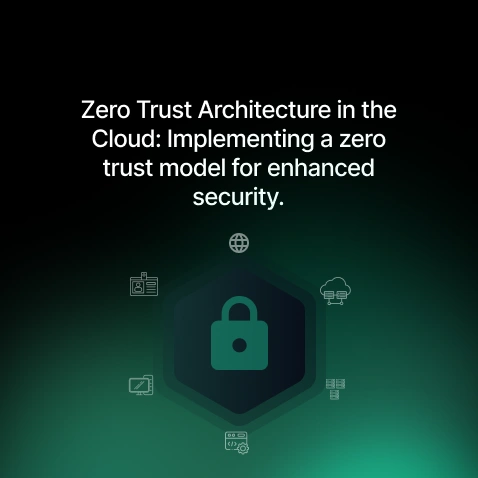
Industries
- AWS, AWS Cloud Trail, AWS Secret Manager, Cloud Security, Security
Share Via
Overview of Zero Trust on AWS
Zero Trust, one of the transforming security models, essentially changes the traditional approach of ‘trust’ based on a network location. It works on the principle that no entity should, by default, be trusted: neither inside nor outside of a network. This has especially important implications in cloud environments like AWS, wherein resources are dynamically allocated, accessed globally, and frequently integrated with other services outside a network. In such a landscape, the traditional model of trusting only internal traffic and scrutinizing only external traffic is no longer sufficient in an ever-evolving and complex threat landscape.
AWS provides a distributed, borderless infrastructure; at the same time, traditional network perimeters no longer apply. Zero Trust becomes very important in such environments: tight access controls, robust identity verification, and constant monitoring for threats. This, in turn, means that in AWS, every request for access is authenticated, irrespective of source, and valid users and devices get only the minimum permissions required for any particular task.
Importance of Zero Trust for Cloud Security
As cloud adoption accelerates, the need for a Zero Trust model increases to provide improved security around sensitive data and infrastructure. Traditional security models that are largely perimeter-defense-based remain inadequate for cloud environments, wherein resources are no longer held within a corporate network. The highly dynamic and distributed nature of cloud services underlines the need to move away from perimeter-based defenses to a model of assuming breach and implementing comprehensive verification processes.
Within AWS, Zero Trust actually is realized with a security strategy by which every access request will be authenticated continuously, authorized, and encrypted. It mitigates a large number of threats, particularly those associated with unauthorized access, data breaches, and insider threats, that are commonly observed within cloud environments as a result of their openness and accessibility. Under the Zero Trust model, only properly authenticated users, with authorizations to access some resource, are granted access to that resource.
It is in this model that AWS has also vandalized by providing services and tools to implement Zero Trust principles, such as IAM for fine-grained permissions, network segmentation using security groups and VPCs, at-rest and in-transit encryption. The Zero Trust model can, therefore, enhance one’s security posture, hence making the cloud environment quite strong against the evolutionary nature of cyber threats and ensuring conformance to industry regulations.
Understanding Zero Trust
What is Zero Trust?
Zero Trust is a cybersecurity framework premised on the principle of never trust, always verify. It challenges the traditional thinking has been that everything inside an organizational network is safe. Zero Trust requires that all access requests, whether from inside or outside a network, are authenticated, authorized, and encrypted. This simply limits access to those who have a need for it and ensures all connections are secured to minimize the risk of unauthorized access.
Traditional Security vs. Zero Trust
Traditional security models are oriented to provide a robust perimeter defense around the organization’s network with things like firewalls and intrusion detection systems. Many times, once inside this perimeter, users and systems are trusted by default. Should this perimeter be breached, it would enable the potential for threats to move laterally within the network. This model worked quite well with monolithic on-premises infrastructures where there was a fairly well-defined line of demarcation between trusted and untrusted environments.
However, through cloud computing, mobile computing, and telecommuting, these perimeters have started to blur. On the other hand, the current world presents organizations with distributed and dynamic environments where resources and users can be located at multiple places, running on multiple platforms. In such cases, the conventional perimeter is rendered inadequate.
Zero trust helps in dealing with these problems by focusing on securing individual resources. Zero Trust does not function on trust established from a particular network location like the traditional models do. Rather, every access request under Zero Trust is validated. This model reduces modern complicated IT environment-related risks by enforcing very tight access controls and keeping a keen eye on any threats that may arise.
AWS’s Approach to Zero Trust
AWS embraces Zero Trust principles across its cloud services. AWS provides tools and capabilities for the effective security of cloud environments. The key components of the approach by AWS are:
- IAM—Identity and Access Management: This is one of the key tools one would use to implement Zero Trust in the cloud. It enables organizations to manage access to all the AWS resources securely by using fine-grained access control policies. Through IAM, administrators can ensure that users have access to only those resources which are required based on the principal of least privilege.
- VPC Security Groups: AWS VPC security groups function as virtual firewalls; they control both the inbound and outbound traffic to the AWS resources. Security groups allow organizations to implement strict controls over network access by only allowing authorized traffic to reach critical systems. This is aligned with Zero Trust because every connection is evaluated and controlled.
- AWS Key Management Service (KMS): AWS KMS is indeed where the core of Zero Trust resides, considering the power of encryption that it brings to help protect data in-flight and at rest. This will enable an organization to create and manage keys required for encryption and ensure that sensitive data remains always encrypted and accessible to authorized users.
- Continuous monitoring and auditing: AWS has provided services like CloudTrail and GuardDuty for continuous monitoring and threat detection that help in maintaining the Zero Trust environment. Each API call within an AWS account will be logged with CloudTrail, providing a record of everything a user does. GuardDuty enables smart threat detection by watching network traffic and account behavior for indications of possible security problems.
A Zero Trust model enforces stronger cloud security posture through its implementation in organizations. It verifies every request that is made to access and ensures all data is protected, no matter where it resides. For that matter, AWS offers end-to-end security services with all the tools in support of shifting from traditional perimeter defenses to a far more resilient and responsive security framework to meet today’s modern cloud environments.
AWS Services to Support building a Zero Trust security model
- AWS Identity and Access Management (IAM):IAM is central to Zero Trust on AWS. IAM will allow you to describe and enforce fine-grained access control. You will be able to manage user identities, roles, and permissions for securing access to your AWS resources with the help of IAM.
- AWS Virtual Private Cloud (VPC):VPC can isolate the network environment within AWS. Secondly, the flow of information between resources is regulated by the VPC Security Groups and the Network ACLs, which enable micro-segmentation and limit the potential impact in case of security breaches.
- AWS Key Management Service (KMS): KMS manages encryption keys and helps ensure that data at rest is kept secure through encryption. You can integrate KMS with other AWS services to enable automated encryption of data across your environment.
- AWS CloudTrail: CloudTrail allows for exceptional logging of API calls and user activity in an AWS account. These logs are essential for auditing, incident response, and maintaining a strong security posture.
- Amazon GuardDuty:GuardDuty is a threat detection service that enables the continuous monitoring of misfeasance attempts, unauthorized penetration, and account compromises in your AWS account and workloads. It combines its intelligence with other services from AWS to automate threat detection and response.
- AWS WAF (Web Application Firewall): AWS WAF secures your web applications against common web exploits by letting you create rules that block malicious requests. This is very critical to protecting your web-facing applications as part of a Zero Trust approach.
- AWS Shield: AWS Shield protects from DDoS (Distributed Denial of Service)attacks. It provides automatic detection and mitigation for DDoS attacks to keep your applications up and running.
- AWS Secrets Manager:Secrets Manager provides a security storage system and manages the access of handled sensitive information, such as API keys and database credentials. It supports integration with AWS IAM and other services to provide safe controlled access to secrets.
- AWS Firewall Manager:Firewall Manager provides a central place to manage all firewall rules across your AWS environment. It allows one to implement consistent security policies across multiple accounts and VPCs to scale out the implementation of Zero Trust architectures.
- AWS Config: AWS Config provides configuration change tracking and evaluates the changes against the desired configuration to ensure your environment stays compliant with security policies. It supports additional services from within AWS so as to offer continuous monitoring and automated remediation of non-compliant configurations.
Implementing Zero Trust on AWS
Step-by-Step Implementation:
Step 1: Identity and Access Management
- Create IAM Roles and Policies: Define roles with least privilege, and assign specific permissions.
- Enable MFA: Enhance security by requiring MFA for all user accounts.
- Use AWS SSO: Centralize access management across multiple AWS accounts and third-party applications.
Step 2: Secure Network Access
- Implement VPC for Segmentation: Segment your network into different VPCs and subnets based on resource sensitivity.
- Use Security Groups and ACLs: Control traffic at the instance and subnet levels.
- Deploy AWS Network Firewall: Set up stateful inspection rules and enable intrusion detection.
Step 3: Continuous Monitoring and Logging
- Enable CloudTrail: Track API calls and account activity.
- Integrate with CloudWatch: Monitor logs and create alerts for anomalies.
- Implement AWS Config: Monitor and ensure resource compliance with internal policies.
Step 4: Threat Detection and Incident Response
- Enable GuardDuty: Monitor for malicious activity and unauthorized behavior.
- Use AWS Security Hub: Centralize and automate response actions using AWS Lambda.
Step 5: Data Protection
- Encrypt Data: Use AWS KMS for data at rest and TLS/SSL for data in transit.
- Implement Amazon Macie: Discover, classify, and protect sensitive data in Amazon S3.
Overcoming Challenges in Adopting Zero Trust on AWS
Common Challenges:
- Disruption and Lengthy Implementation: Transitioning to Zero Trust can be a disruptive and time-consuming process, requiring careful planning to avoid creating security gaps during the transition.
- Legacy Systems Compatibility: Legacy applications may face compatibility issues, potentially necessitating costly updates or even complete overhauls to align with Zero Trust principles.
- High Upfront Costs: While the initial investment in Zero Trust architecture can be substantial, the long-term benefits in security and operational efficiency generally justify these expenses.
- Cultural Shift in Security Mindset: Transitioning to a Zero Trust model requires a fundamental shift from perimeter-based security to continuous verification and strict access controls. This change can face resistance from teams accustomed to traditional security practices, making it a challenge to enforce new policies consistently.
- Resource Constraints: Implementing Zero Trust requires considerable investment in time, training, and resources. Organizations with limited IT budgets or personnel may struggle to fully adopt and maintain a Zero Trust architecture, leading to partial implementations that fall short of providing comprehensive security.
Best Practices for Overcoming Challenges:
- Gradual Implementation: Instead of complete implementation, introduce Zero Trust incrementally, starting with the most critical assets and high-risk areas within the infrastructure. This will allow teams to learn how to adjust and further improve the working strategy before its scaling across the whole AWS environment.
- Use AWS Managed Services with SquareOps: AWS has managed services—AWS IAM, VPC Security Groups, and AWS KMS—integral for the implementation of Zero Trust. These services will also, in great ways, simplify the different ways Zero Trust may be implemented, providing fine-grained access control, network segmentation, and robust encryption. Further, SquareOps can provide expert consulting on these AWS services and their implementation to ensure that they are optimally set up and integrated into your existing infrastructure. We at SquareOps bring to you solutions that map AWS Zero Trust capabilities to the specific security needs of your organization, thereby minimizing any complexity and ensuring a seamless transition.
- Training and Education: Invest in training and education—teams should understand the principles of Zero Trust and how it serves the organization. Communication about its importance, openness, and hands-on training make this transition smoother and reduce resistance.
- Collaboration and Communication: Foster collaboration between IT, security, and business teams to ensure everyone is aligned around the goals and benefits of Zero Trust. This can be further assisted by periodic updates and open lines of communication, which tend to allay fears and lead to mutual understanding around the initiative.
Case Study
Strengthening DevSecOps with AWS at Cimet
About Cimet: Cimet is a full-service digital comparison platform that helps customers compare and switch to better energy plans, boosting brand value and reducing conversion times.
Challenge: Cimet faced difficulties in implementing DevOps best practices, especially in securing their infrastructure, data, and applications. The company needed a centralized security approach, data encryption, cybersecurity processes from the start, and compliance with CIS standards.
Solution: SquareOps utilized AWS services, deploying applications over EC2 instances with auto-scaling and implementing security measures such as AWS KMS for encryption, AWS Secrets Manager for sensitive data, and various DevSecOps tools within AWS CodePipeline. This setup ensured a continuous security posture, with regular monitoring through AWS Security Hub and Inspector.
Results: The implementation provided maximum security aligned with AWS Well-Architected Principles. Cimet saw improved security with restricted IAM access, quick vulnerability management, and better handling of sensitive environment variables.
Read more: https://squareops.com/case-studies/devsecops-with-aws-codepipeline/
Centralized Security and Compliance Management for Synaptic
Overview: Synaptic, a leading alternative data platform, partnered with SquareOps to address fragmented security measures across multiple AWS accounts, which hindered consistent practices and increased the risk of security incidents.
Challenge: Synaptic needed to unify their security posture across various AWS accounts, ensuring compliance with ISO27001 standards and enhancing network security to prevent unauthorized access.
Solution: SquareOps implemented a centralized security architecture using AWS services, including:
- AWS Network Firewall: Established secure VPCs, subnets, and Transit Gateway ENIs, centralizing traffic monitoring and control.
- AWS CloudTrail: Centralized API logs for unified visibility across all AWS accounts.
- AWS Security Hub & GuardDuty: Aggregated security findings and enabled continuous threat detection.
- AWS Config & IAM Access Analyzer: Ensured compliance and enforced least privilege access policies.
Outcome: Synaptic achieved centralized security management, enhanced threat detection, and compliance with ISO27001 standards, significantly reducing the risk of unauthorized access and improving overall security posture.
Read more: https://squareops.com/case-studies/transforming-aws-security/
The Future of Zero Trust in AWS Cloud Security
Emerging Trends:
Zero Trust is evolving as a critical framework for cloud security, where AWS will keep enhancing these tools to support the ever-growing security demands. The ever-increasing sophistication of threats is going to make the integration of AI and machine learning within AWS Zero Trust solutions both predictive in analytics and responsive in automation against probable threats. In addition to this, AWS will pay more focus on micro-segmentation, identity management, and encryption for higher granularity in controlling cloud offerings and data. The other trend that will see wide acceptance is the integration of Zero Trust principles within DevSecOps to ensure end-to-end baked security throughout the development lifecycle.
Advancements in Zero Trust Practices:
In the future, Zero Trust will be all about continuous verification and adaptive access control as it is being scaled. Organizations can look forward to more automation for the enforcement of policies and real-time threat detection. In addition, as Zero Trust converges with edge computing and hybrid cloud environments in the future, new paradigms will be required to secure decentralized resources. Probably at the top of the list of providers of scalable and cloud-native Zero Trust solutions, AWS will deal with these complex and dynamic environments and guarantee robust security at all layers of cloud infrastructure.
Conclusion
Zero Trust is essential for securing AWS environments in today’s threat landscape. By focusing on strict identity verification, micro-segmentation, and continuous monitoring, organizations can protect their cloud resources more effectively. Adopting Zero Trust principles ensures that every access request is scrutinized, minimizing the risk of breaches.
Organizations should assess their current cloud security measures and consider implementing a Zero Trust model using AWS services. By taking a proactive approach to security, businesses can safeguard their operations and data in an increasingly complex digital environment.
How SquareOps Can Assist
SquareOps delivers fully customized solutions to realize Zero Trust on AWS and assure robust cloud security. With experts in the AWS services, SquareOps—by drawing from years of experience in cloud security best practices—helps your organization design and deploy end-to-end Zero Trust architecture. SquareOps provides the tools and support for identity management to continuous monitoring in order to protect your cloud infrastructure from modern threats. Whether this is your very first step toward Zero Trust or if you need optimization of your current setup, SquareOps stands as your partner in enhanced cloud security.
Frequently asked questions
Zero Trust is a security model that requires strict identity verification for every person and device trying to access resources on a private network, regardless of whether they are inside or outside the network.
Zero Trust is crucial for AWS cloud security because it helps protect against modern cyber threats by verifying every access request and ensuring that all connections are secure, reducing the risk of breaches.
AWS supports Zero Trust through services like Identity and Access Management (IAM), VPC Security Groups, AWS KMS for encryption, and continuous monitoring tools like AWS CloudTrail and GuardDuty.
The core principles include strict identity verification, least privilege access, network segmentation, continuous monitoring, and encryption of data both at rest and in transit.
Start by assessing your current security posture, deploying strict IAM policies, setting up micro-segmentation with VPCs, enabling encryption with AWS KMS, and configuring continuous monitoring with AWS tools.
Challenges include the complexity of integrating Zero Trust with existing infrastructure, the need for organizational change, and potential resistance from teams accustomed to traditional security models.
SquareOps offers tailored solutions for Zero Trust implementation on AWS, providing expert guidance on IAM configuration, network security, encryption, and continuous monitoring to enhance cloud security.
Key services include AWS IAM, VPC Security Groups, AWS KMS, AWS CloudTrail, Amazon GuardDuty, AWS WAF, AWS Shield, and AWS Secrets Manager.
Traditional security models rely on perimeter defenses, while Zero Trust focuses on securing individual resources by verifying every access request, regardless of its origin.
Yes, Zero Trust principles can be applied to multi-cloud environments by implementing consistent security policies across all cloud platforms and using tools that support cross-cloud identity and access management.
Related Posts
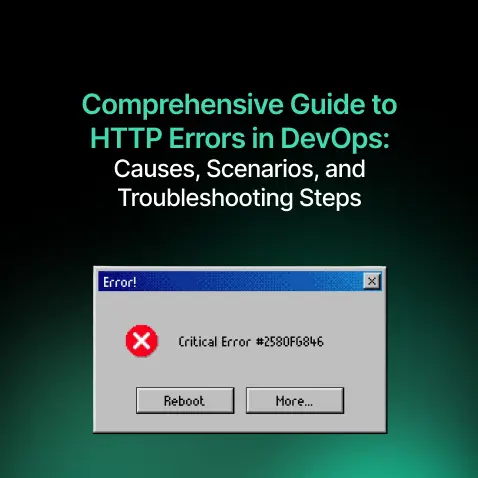
Comprehensive Guide to HTTP Errors in DevOps: Causes, Scenarios, and Troubleshooting Steps
- Blog
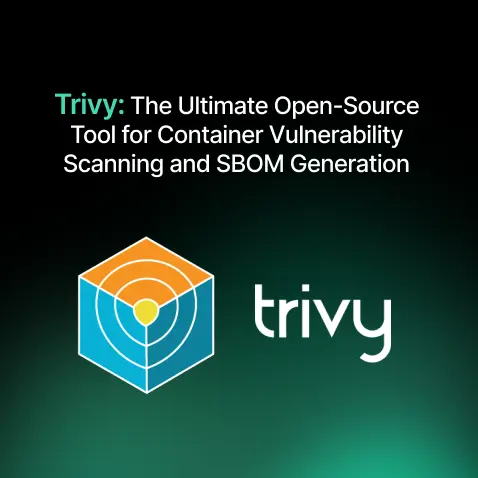
Trivy: The Ultimate Open-Source Tool for Container Vulnerability Scanning and SBOM Generation
- Blog
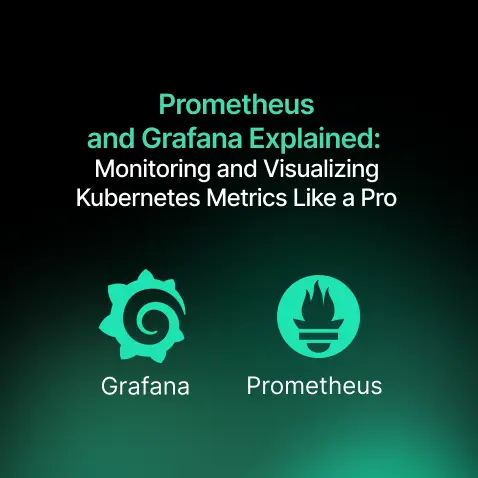
Prometheus and Grafana Explained: Monitoring and Visualizing Kubernetes Metrics Like a Pro
- Blog
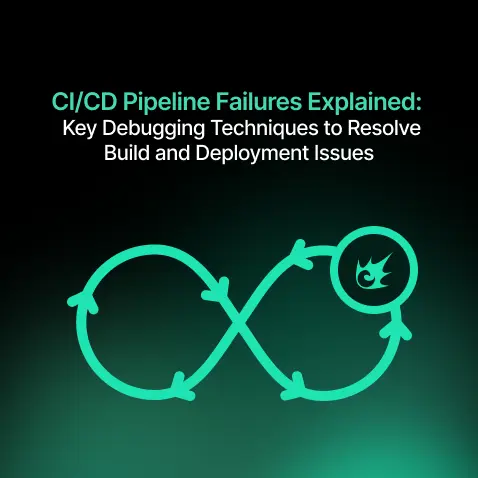
CI/CD Pipeline Failures Explained: Key Debugging Techniques to Resolve Build and Deployment Issues
- Blog
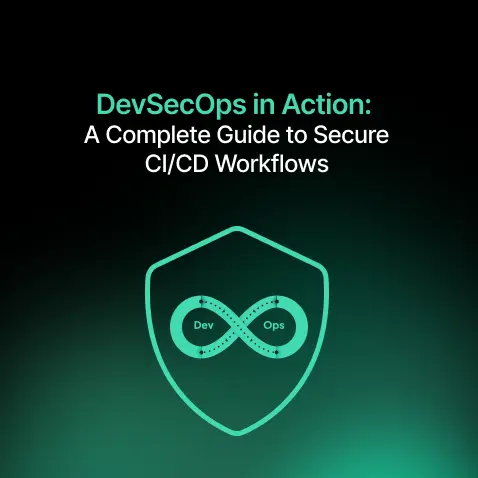
DevSecOps in Action: A Complete Guide to Secure CI/CD Workflows
- Blog

AWS WAF Explained: Protect Your APIs with Smart Rate Limiting
- Blog

